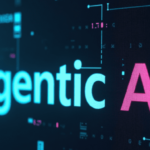Why the AI hype now when we had AI tools and processing techniques more than 50 years back ? Artificial Intelligence (AI) has a rich history, marked by periods of rapid advancement and notable stagnation. Despite early conceptualizations and the development of foundational technologies, AI’s journey to its current state has been anything but straightforward. This article delves into the reasons behind the delayed development of AI, the resurgence of interest and hype, the advancements in current AI technologies, and the future prospects of AI.
Early Concepts and Delays in AI Development
1. Early Concepts and Technologies: The concept of AI dates back to ancient myths and stories of artificial beings endowed with intelligence. However, the formal study of AI began in the mid-20th century. Alan Turing, a British mathematician, is often credited with laying the groundwork for AI with his 1950 paper “Computing Machinery and Intelligence,” where he introduced the Turing Test to assess a machine’s ability to exhibit intelligent behavior.
In 1956, the Dartmouth Conference, organized by John McCarthy, Marvin Minsky, Nathaniel Rochester, and Claude Shannon, is considered the birthplace of AI as a field. The conference proposed that “every aspect of learning or any other feature of intelligence can in principle be so precisely described that a machine can be made to simulate it”.
2. Early Programming Languages: LISP and Prolog were among the first programming languages developed specifically for AI research. LISP, created by John McCarthy in 1958, was designed for symbolic processing and became the language of choice for AI research due to its flexibility and powerful features. Prolog, developed in the early 1970s, was designed for natural language processing and logical reasoning.
3. Challenges and AI Winters: Despite these early advancements, AI research faced significant challenges. The initial optimism was followed by periods known as “AI winters,” where progress stalled due to unmet expectations and reduced funding. The complexity of AI problems, limitations in computing power, and the lack of large datasets hindered progress.
Why the AI Hype Now ?
1. Technological Advancements: The resurgence of AI in recent years can be attributed to several key technological advancements:
- Increased Computing Power: The development of powerful GPUs and cloud computing has provided the necessary computational resources to train complex AI models.
- Big Data: The availability of vast amounts of data has enabled AI systems to learn and improve their performance.
- Advanced Algorithms: Innovations in machine learning algorithms, particularly deep learning and neural networks, have significantly improved AI capabilities.
2. Neural Networks and Deep Learning: Neural networks, inspired by the structure and function of the human brain, have been a cornerstone of AI research. However, early neural networks were limited by computational constraints and the lack of effective training algorithms. The breakthrough came with the development of deep learning, which involves training large neural networks with many layers (hence “deep”) to recognize patterns in data.
3. Generative AI and Transformers: The introduction of transformer architectures in 2017 revolutionized AI by enabling the development of generative AI models like GPT (Generative Pre-trained Transformer). These models can generate human-like text, images, and even music, showcasing the creative potential of AI.
4. Real-World Applications: AI’s ability to solve real-world problems has driven its widespread adoption across various industries. From healthcare and finance to transportation and entertainment, AI is transforming how we live and work.
AI Development
| Aspect | Early AI (1950s-1990s) | Current AI (2000s-Present) |
|---|---|---|
| Computing Power | Limited by early hardware | Advanced GPUs, cloud computing |
| Data Availability | Scarce, small datasets | Big data, vast amounts of information |
| Algorithms | Basic symbolic processing, early ML | Deep learning, neural networks, transformers |
| Programming Languages | LISP, Prolog | Python, TensorFlow, PyTorch |
| Applications | Theoretical, limited practical use | Wide-ranging real-world applications |
What is the Future of AI Development ?
1. Continued Advancements: AI is expected to continue evolving, with advancements in areas such as:
- Multimodal AI: Combining text, image, and audio processing to create more versatile AI systems.
- Explainable AI: Developing AI systems that can explain their decisions and actions, improving transparency and trust.
- AI Ethics and Regulation: Addressing ethical concerns and implementing regulations to ensure responsible AI development and deployment.
2. Impact on Society after AI Development: AI’s impact on society will be profound, influencing various aspects of our lives:
- Automation: AI will automate routine tasks, freeing up humans to focus on more complex and creative work.
- Healthcare: AI will enhance medical diagnostics, personalized treatment plans, and drug discovery.
- Education: AI-powered tools will provide personalized learning experiences and support educators.
3. Challenges and Considerations of AI Development : As AI continues to advance, several challenges must be addressed:
- Bias and Fairness: Ensuring AI systems are fair and unbiased in their decision-making.
- Privacy: Protecting user data and maintaining privacy in AI applications.
- Job Displacement: Mitigating the impact of AI on employment and ensuring a smooth transition for affected workers.
AI development has been a journey marked by early conceptualizations, periods of stagnation, and recent rapid advancements. The resurgence of AI can be attributed to technological breakthroughs, increased computing power, and the availability of big data. Current AI technologies, particularly deep learning and generative models, have transformed various industries and hold immense potential for the future. As AI continues to evolve, addressing ethical concerns and ensuring responsible development will be crucial to harnessing its full potential for the benefit of society.








